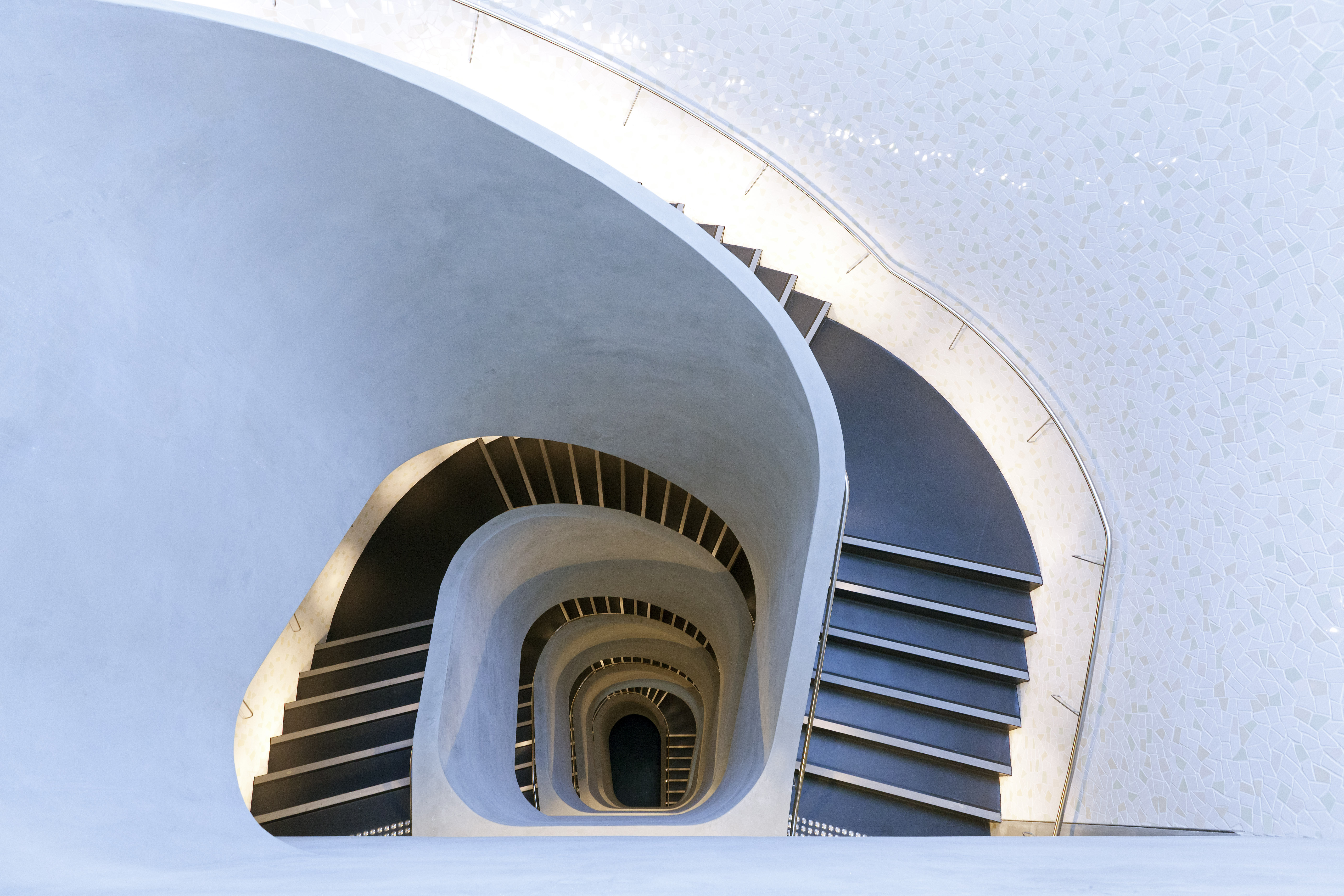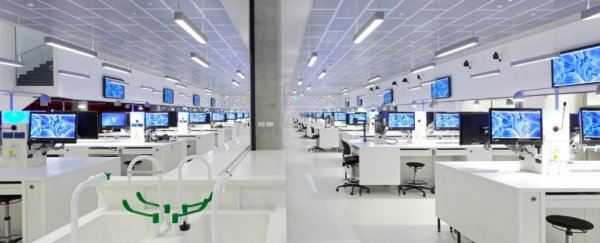The University of Technology Sydney's (UTS) new science building has already made headlines for its green roof, six-star sustainability rating and colourful design, but down in the basement is something even more exciting - a super lab poised to revolutionise the way science is taught.
The lab is the first of its kind in Australia, and is capable of holding 220 students and 12 different classes all at once. It also looks totally different to the uni lab benches we're used to - each work area features headphones and a computer screen, as well as a display area for demonstrators to work with students one-on-one.
The design was based on the Super Lab at the London Metropolitan University, which is touted as the most advanced science teaching facility in Europe.
According to UTS, being able to watch detailed demonstrations on screen, while students perform the experiments themselves, offers a better learning experience. And having several classes running in the lab at once also means that students can start thinking collaboratively and get an insight into the subjects they might want to take in the future.

In fact, the entire science building is set up with this collaborative approach in mind, after UTS:Science decided to get rid of its many separate schools and simply break down the faculty into the School of Life Sciences and the School of Mathematical and Physical Sciences, both of which are housed together in the new building. They hope this will help prepare their students for the real, cross-disciplinary world of science.
"Our research efforts focus on delivering impact – results that effectively tackle the problems we now face in health and the environment, and here also cross-disciplinary collaboration has a big role to play," UTS's Dean of Science, Bruce Milthorpe, told the press. "Our two new science schools will break down old discipline silos, offering researchers and students alike the chance to broaden their experiences."

The building also features a cool-looking forensic crime scene simulation lab (complete with "dead body" mannequins) and a psychology clinic that services members of the community to give students hands-on experience. The green roof features a tree nursery and saltwater tank, where researchers can grow seagrass, algae, and saltmarsh plants, in order to understand how they store carbon dioxide.

By 2020, UTS is aiming to reduce its greenhouse gas emissions by 30 percent based on 2007 levels, while also doubling its floor space, and this building is an important first step.
Seeing as the same old lab layouts have dominated science education for the past century, we're pretty excited that teaching is finally starting to catch up with today's technology. And if it leads to more collaboration in science in the process, that's a bonus.
Find out more about the new building and super lab in the video below, and check out the study options available at UTS:Science here.

